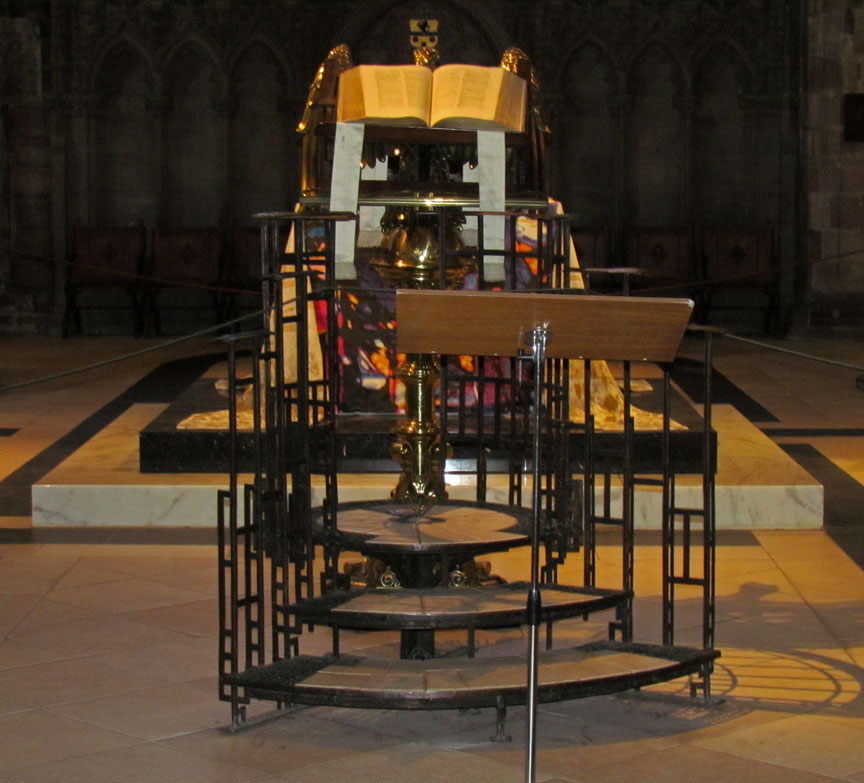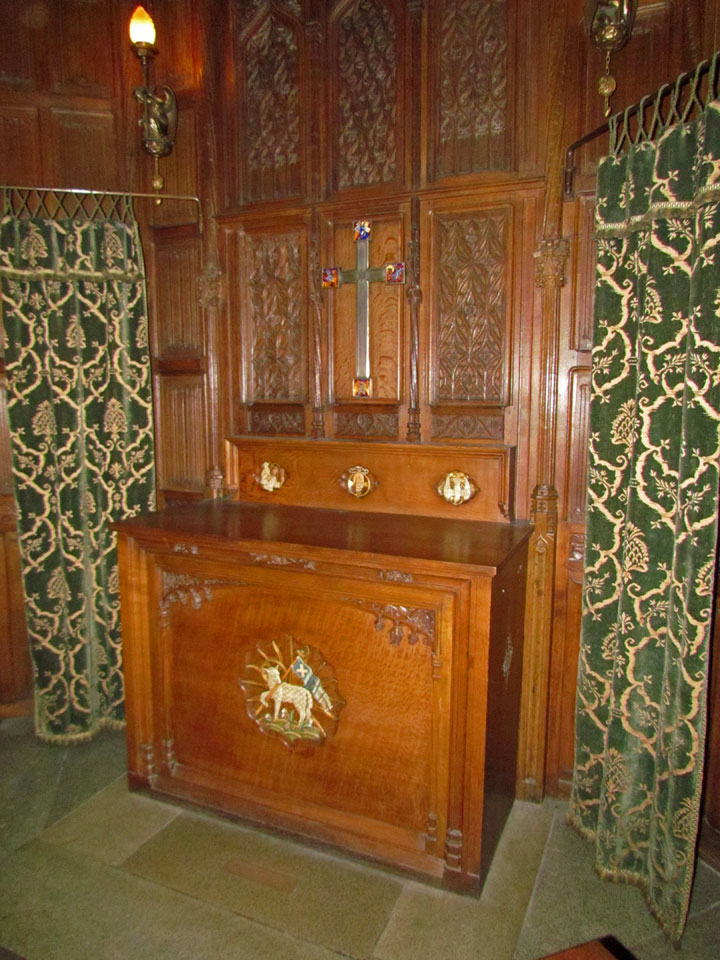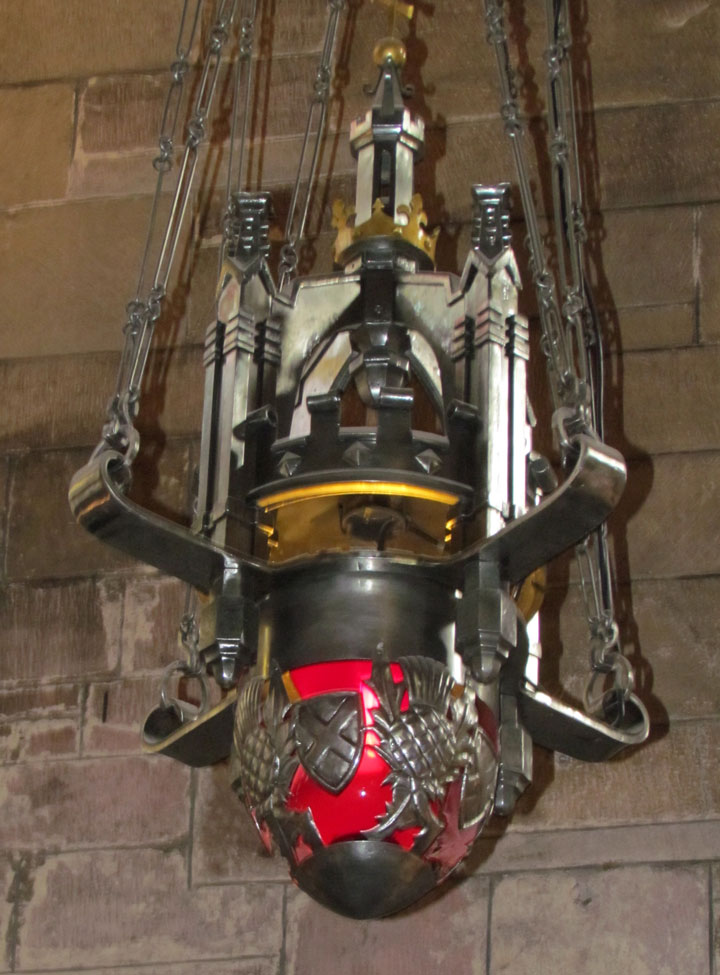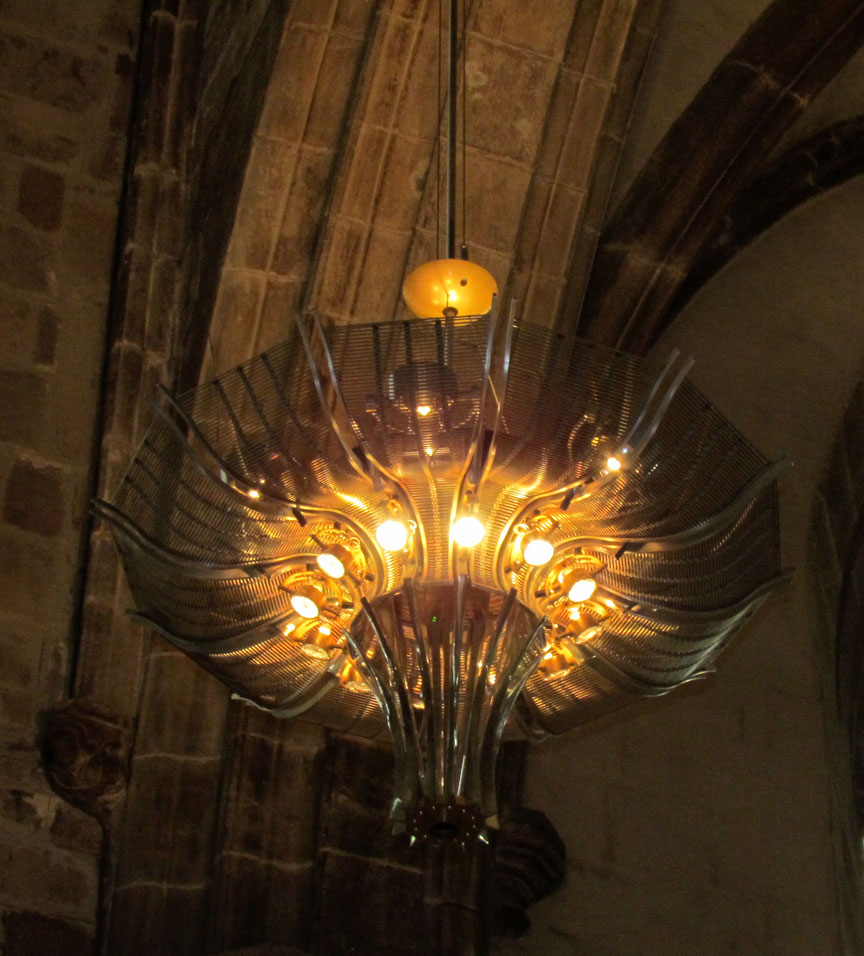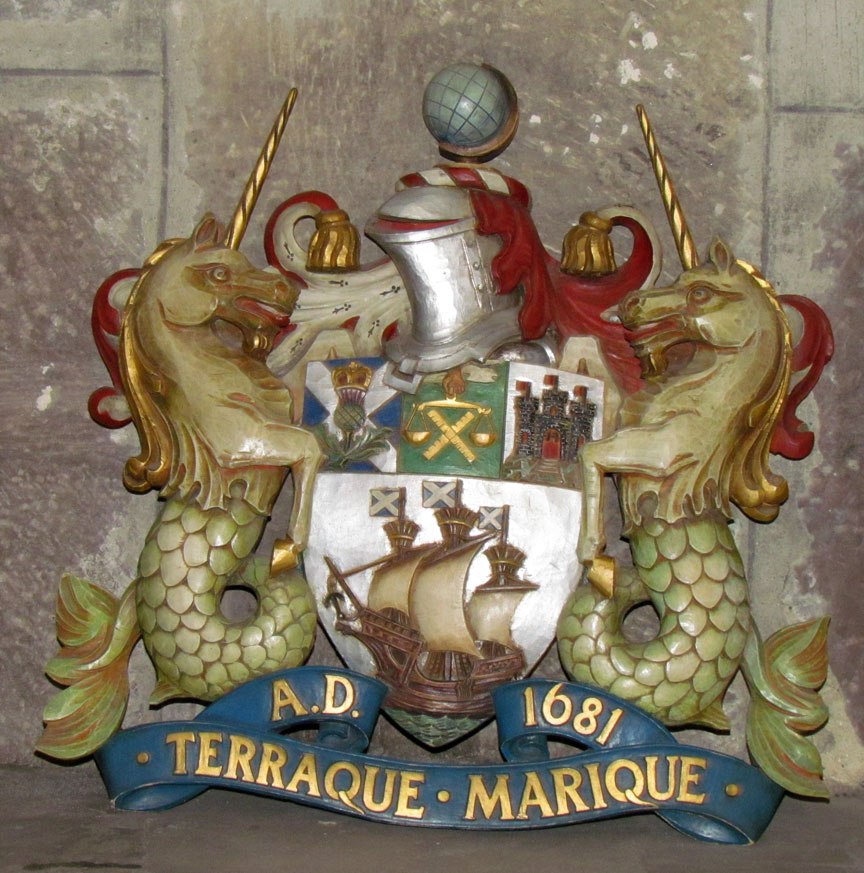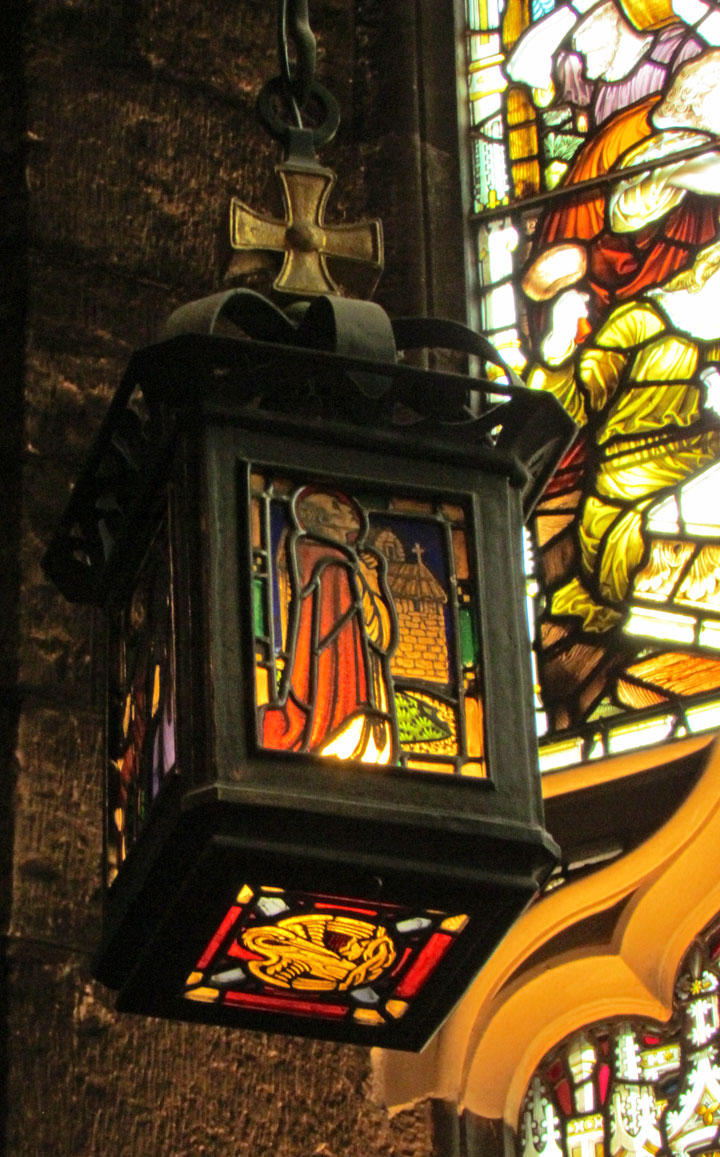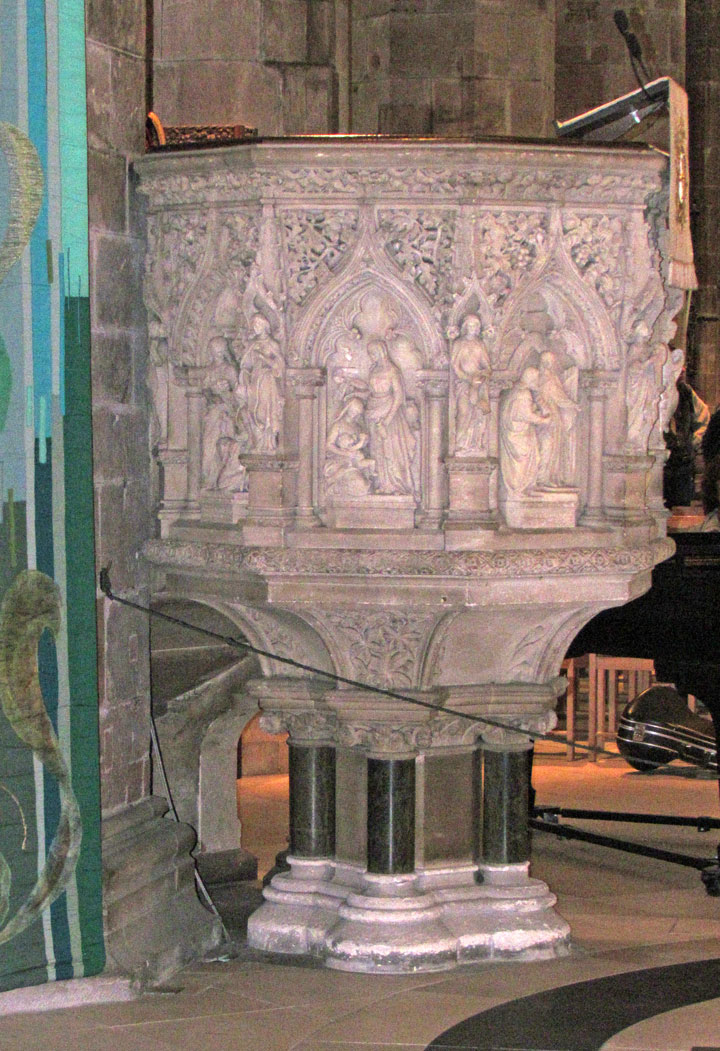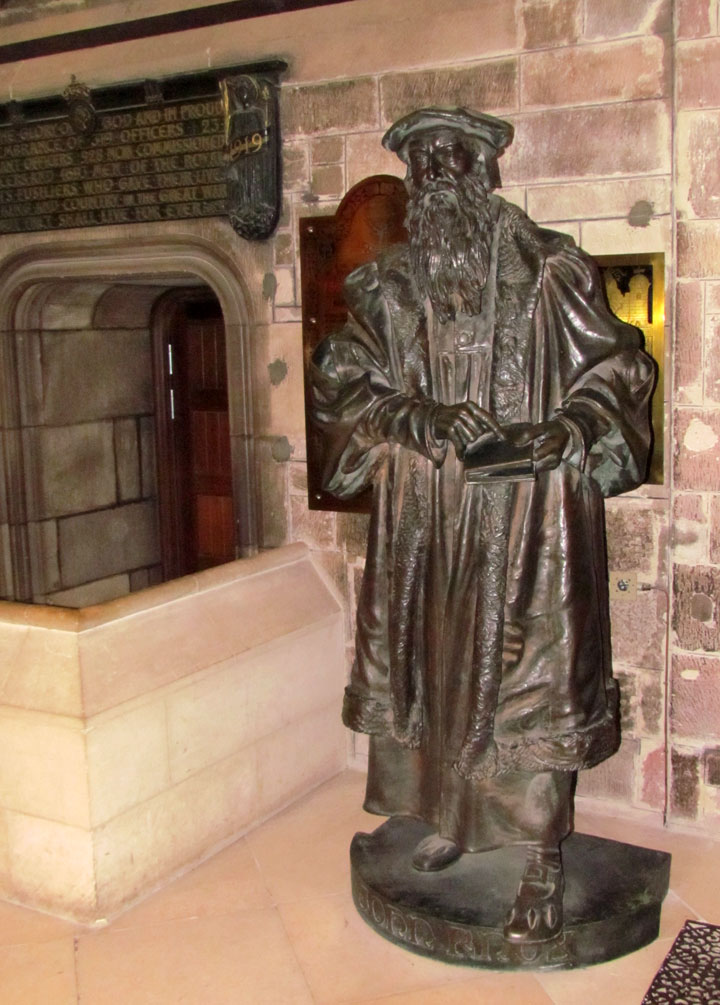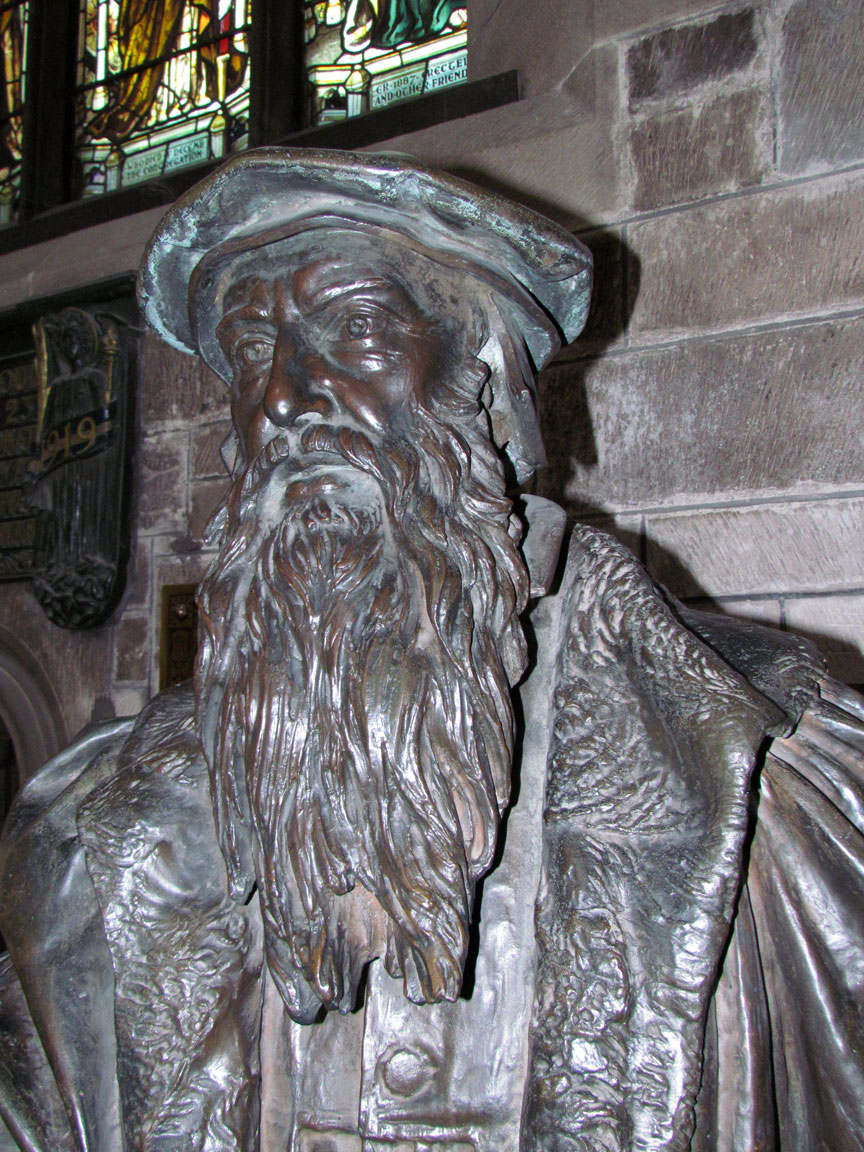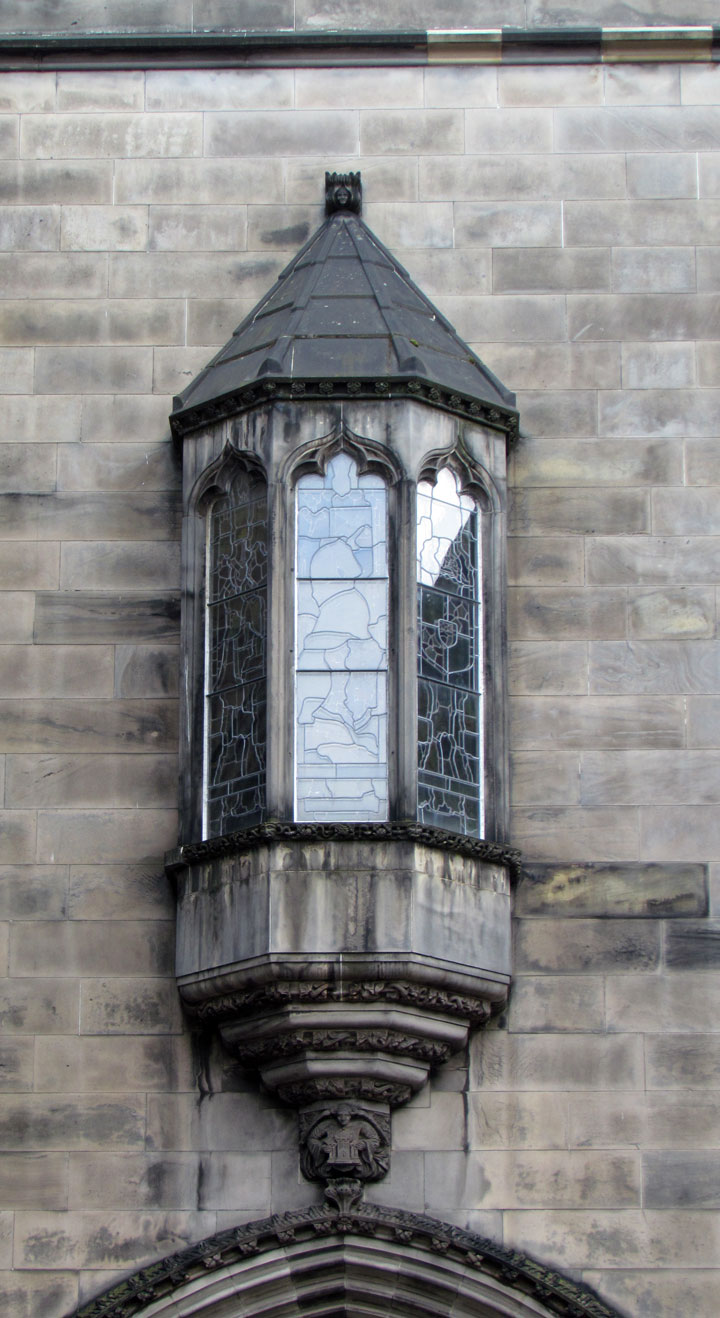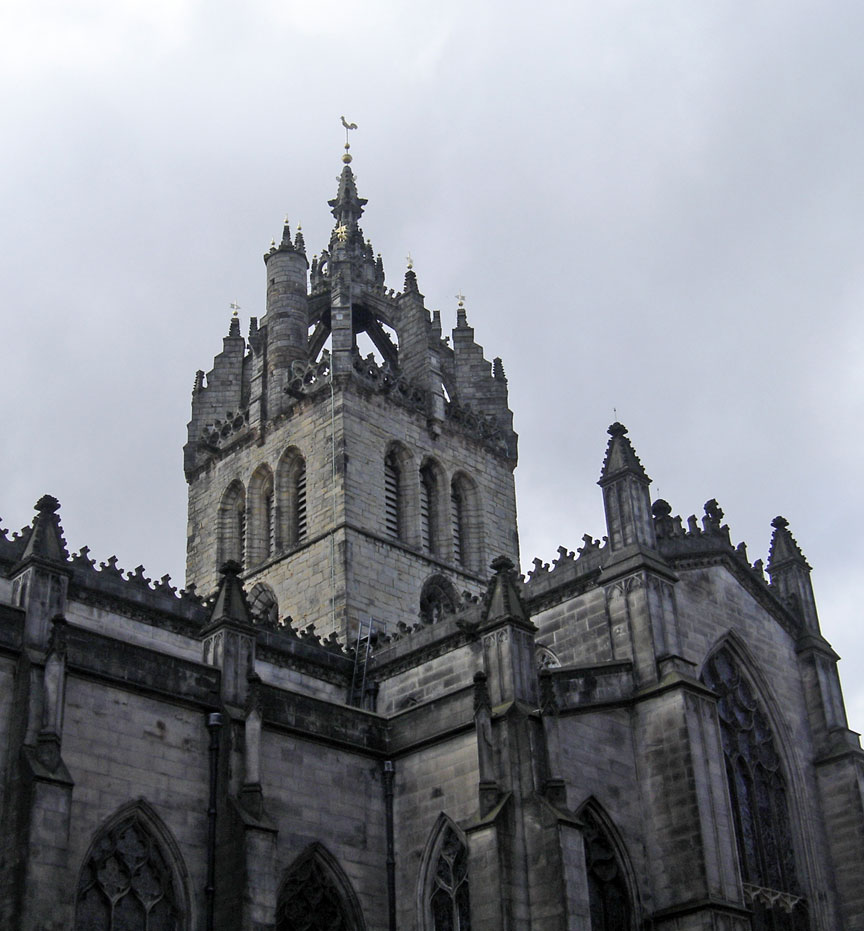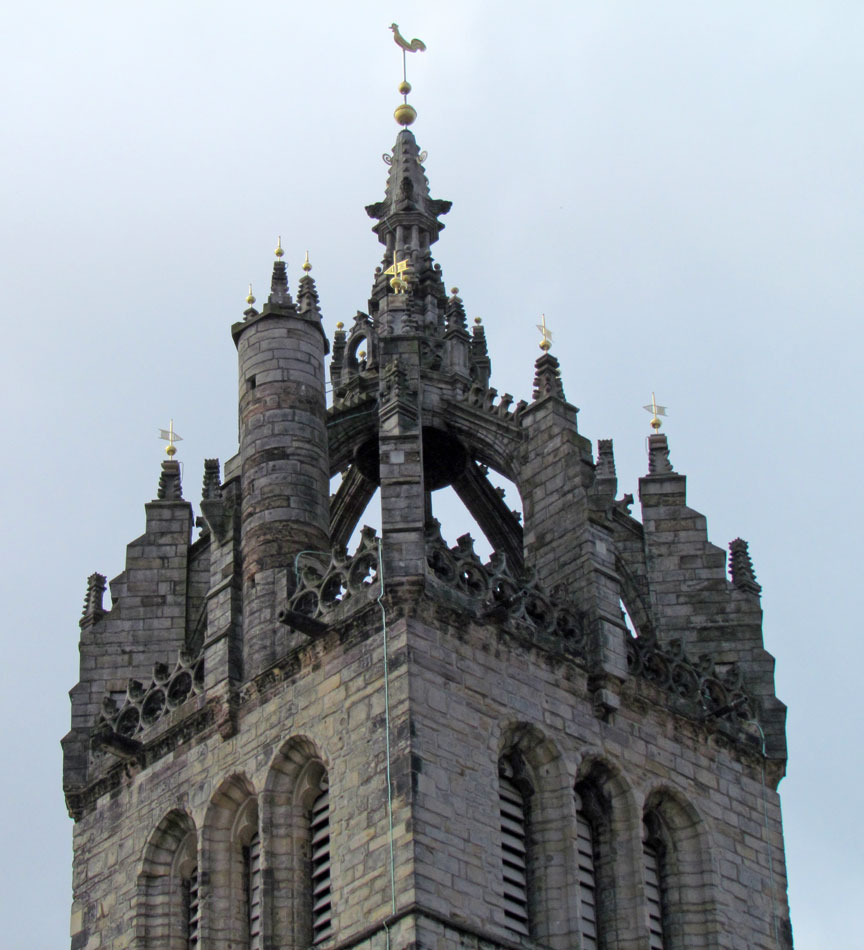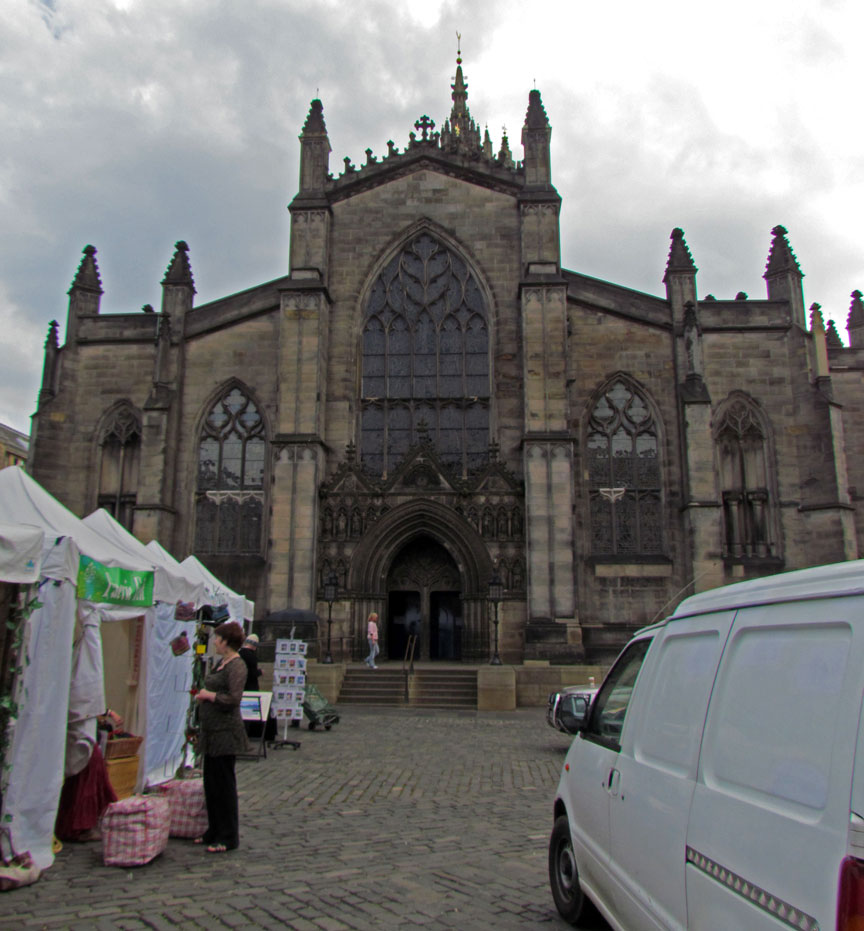

St Giles' Cathedral
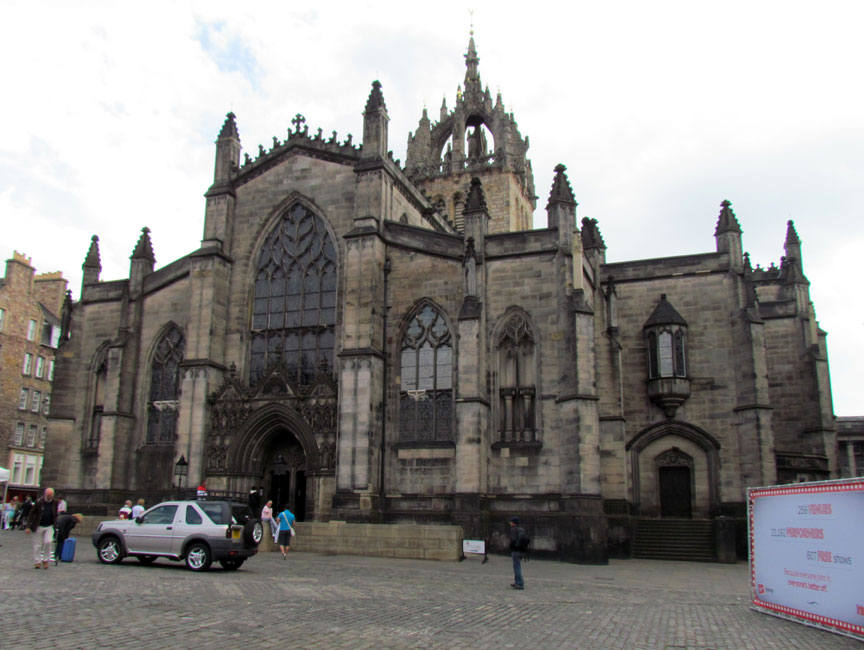
St Giles' Cathedral
St Giles' Cathedral, also known as the High Kirk of Edinburgh, is the principal place of worship of the Church of Scotland in Edinburgh. Its distinctive crown steeple is a prominent feature of the city skyline, at about a third of the way down the Royal Mile which runs from the Castle to Holyrood Palace. The church has been one of Edinburgh's religious focal points for approximately 900 years. The present church dates from the late 14th century, though it was extensively restored in the 19th century, and is protected as a category A listed building.
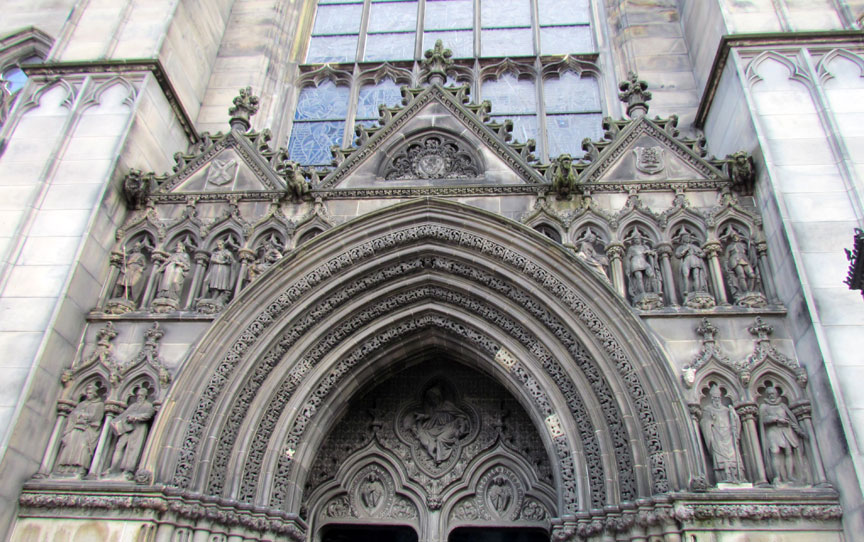
Today it is sometimes regarded as the "Mother Church of Presbyterianism". The cathedral is dedicated to Saint Giles, who is the patron saint of Edinburgh, as well as of cripples and lepers, and was a very popular saint in the Middle Ages. It is the Church of Scotland parish church for part of Edinburgh's Old Town. The current Minister (since 1973) of St Giles' is the Very Reverend Dr Gilleasbuig Macmillan.
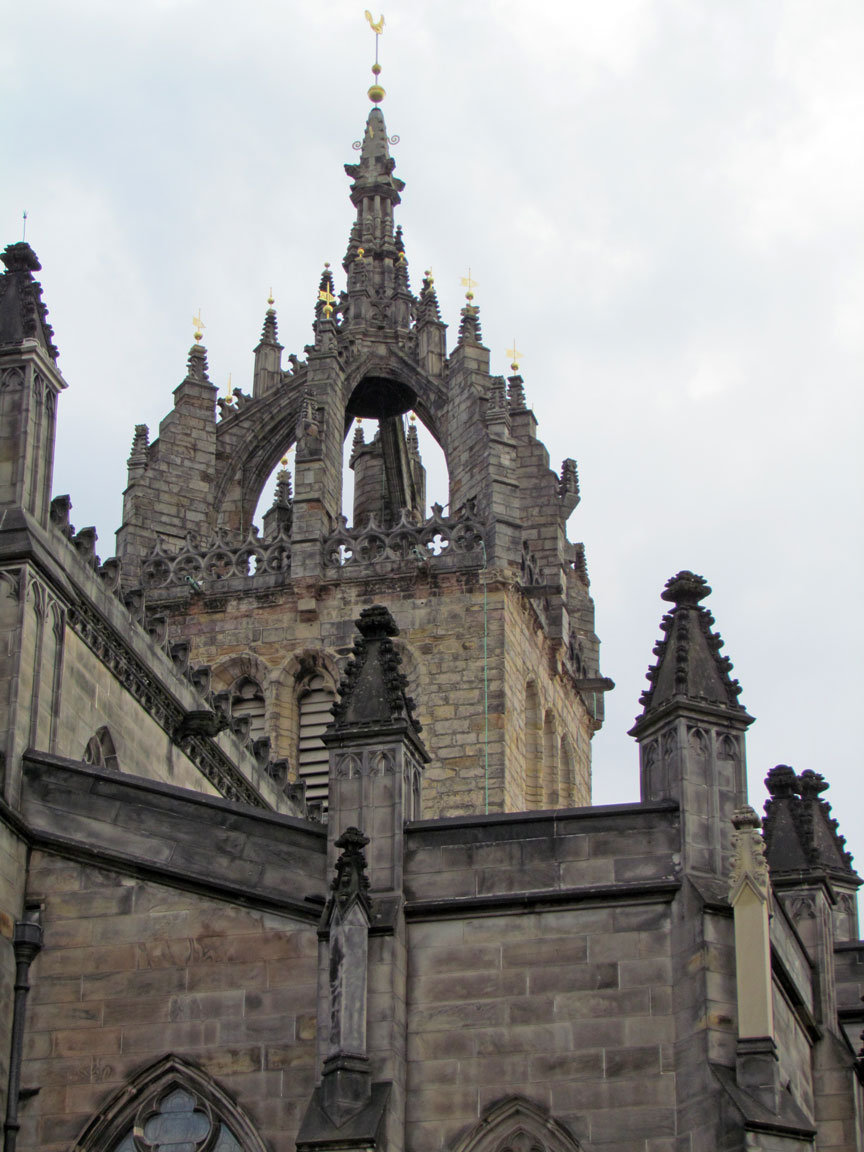
St Giles' was only a cathedral in its formal sense (i.e. the seat of a bishop)
for two periods during the 17th century (1635–1638 and 1661–1689), when
episcopalianism, backed by the Crown, briefly gained ascendancy within the Kirk.
In the mediaeval period, prior to the Reformation, Edinburgh had no cathedral as
the royal burgh was part of the Diocese of St Andrews, under the Bishop of St
Andrews whose episcopal seat was St Andrew's Cathedral. For most of its
post-Reformation history the Church of Scotland has not had bishops, dioceses,
or cathedrals. As such, the use of the term cathedral today carries no practical
meaning. The "High Kirk" title is older, being attested well before the
building's brief period as a cathedral.

The oldest parts of the building are four massive central pillars, often said to
date from 1124, although there is very little evidence to this effect. In 1385
the building suffered a fire and was rebuilt in the subsequent years. Much of
the current interior dates from this period. Over the years many chapels,
referred to as 'aisles', were added, greatly enlarging the church and leaving it
rather irregular in plan. In 1466 St Giles was established as a collegiate
church. In response to this raising of status, the lantern tower was added
around 1490, and the chancel ceiling raised, vaulted and a clear storey
installed. By the middle of the 16th century, immediately before the Reformation
arrived in Scotland, there were about fifty side altars in the church.

During the Scottish Reformation, which began in 1560, the Mary-Bell and brass
candlesticks were scrapped to be made into guns, and the relic of the arm of St
Giles with its diamond finger ring (acquired in 1454) and other treasures were
sold to the Edinburgh goldsmiths Michael Gilbert and John Hart, and the brass
lectern to Adam Fullerton, for scrap-metal. Eventually, the church was
partitioned into numerous preaching halls to suit the style of reformed
Presbyterian worship.

the organ
On Sunday 23 July 1637 efforts by King Charles I to impose Anglican services on the Church of Scotland led to the Book of Common Prayer revised for Scottish use being introduced in St Giles'. Rioting in opposition began when the Dean of Edinburgh, John Hannah, began to read from the new Book of Prayer, legendarily initiated by the market-woman or street-seller Jenny Geddes throwing her stool at his head. The disturbances led to the National Covenant and hence the Bishops' Wars; the first part of the Wars of the Three Kingdoms, which included the English Civil War. In the late 17th century a carillon was made for the cathedral by James Meikle. On the day in 1707 that the Treaty of Union was signed to merge the Parliament of Scotland with the Parliament of England and create the Kingdom of Great Britain, the carilloner in St. Giles rang the bells in the tune Why should I be so sad on my wedding day?
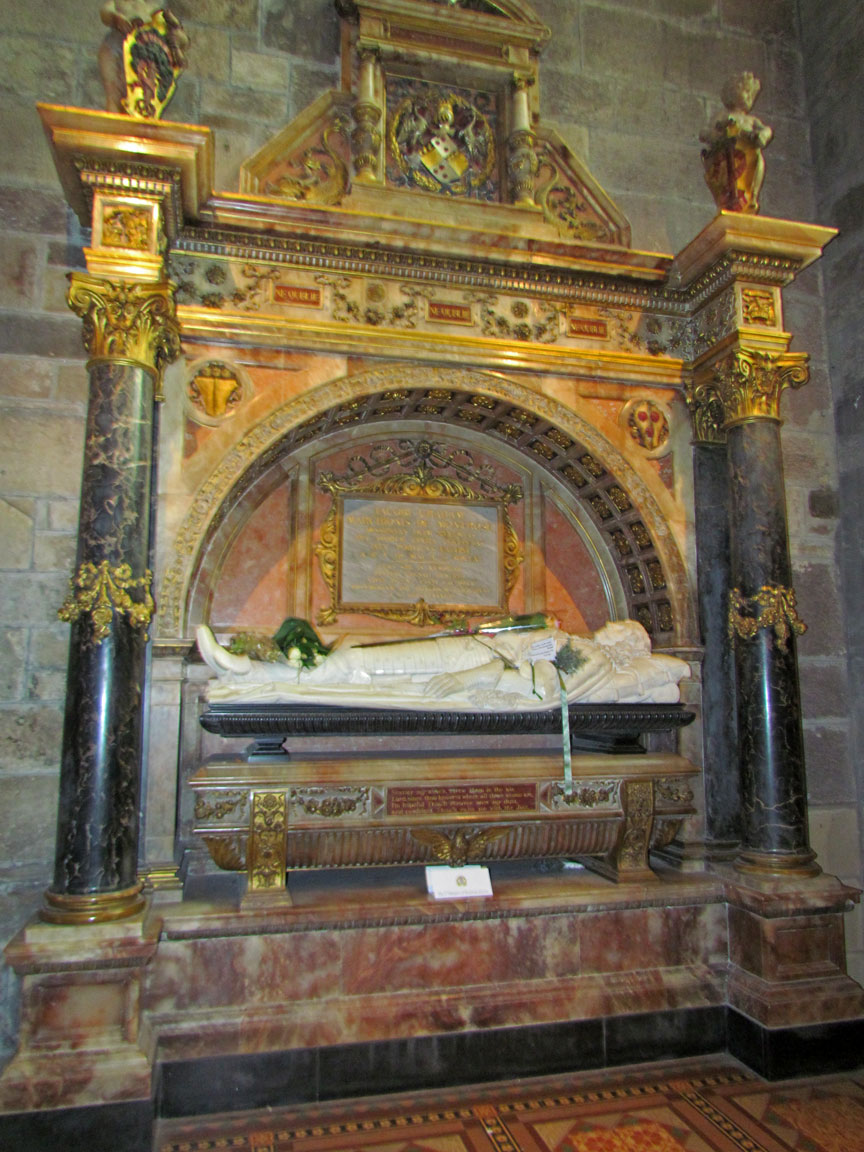
tomb of James Graham, 1st Marquess of Montrose
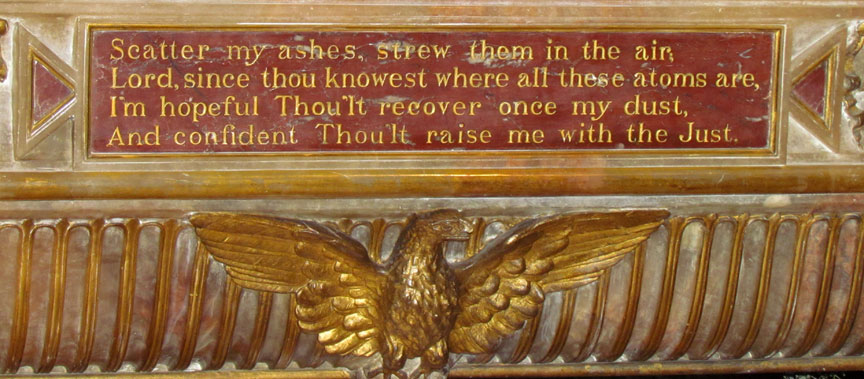
By 1800, with the removal of the Luckenbooths (small shops) from the High
Street, the exterior of St Giles was fully exposed for the first time in
centuries and could be seen to be in poor condition and an embarrassment to the
city. In 1829, architect William Burn was appointed to carry out a restoration
and to beautify and preserve the building. This process demolished some chapels
to improve the symmetry of the external appearance, inserted new, more standard,
window openings and tracery, and encased much of the exterior in a skin of
smooth ashlar.
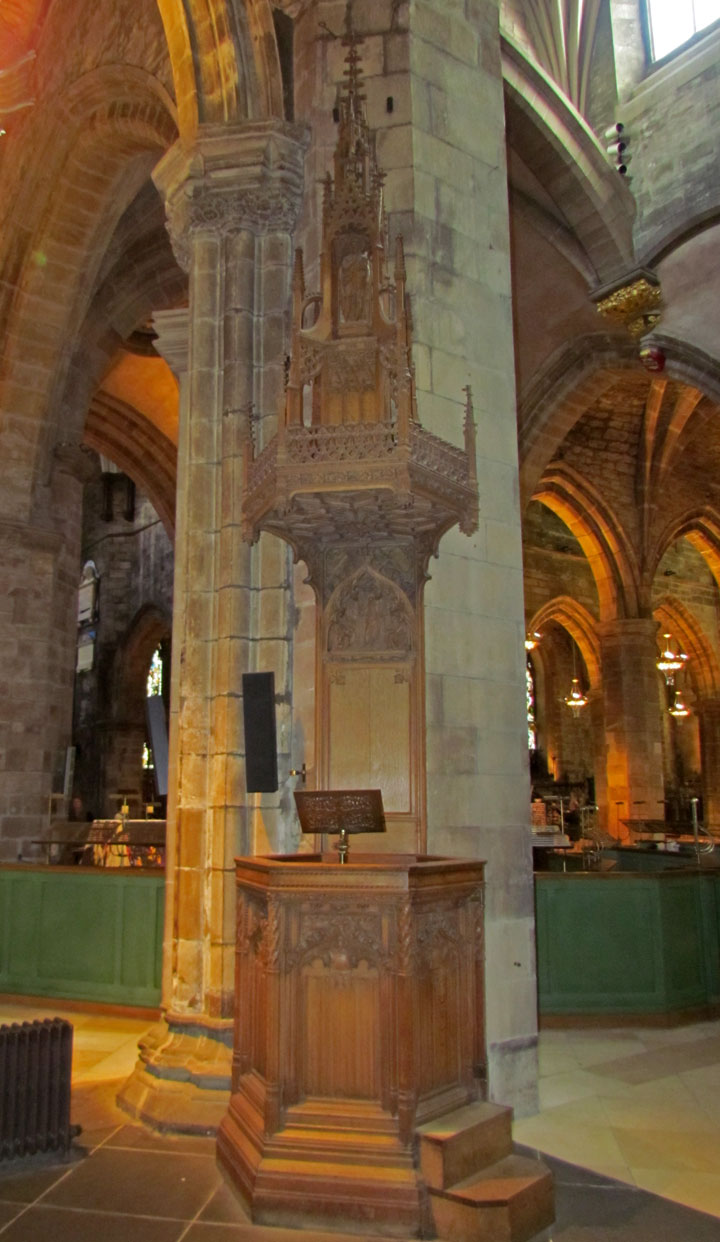
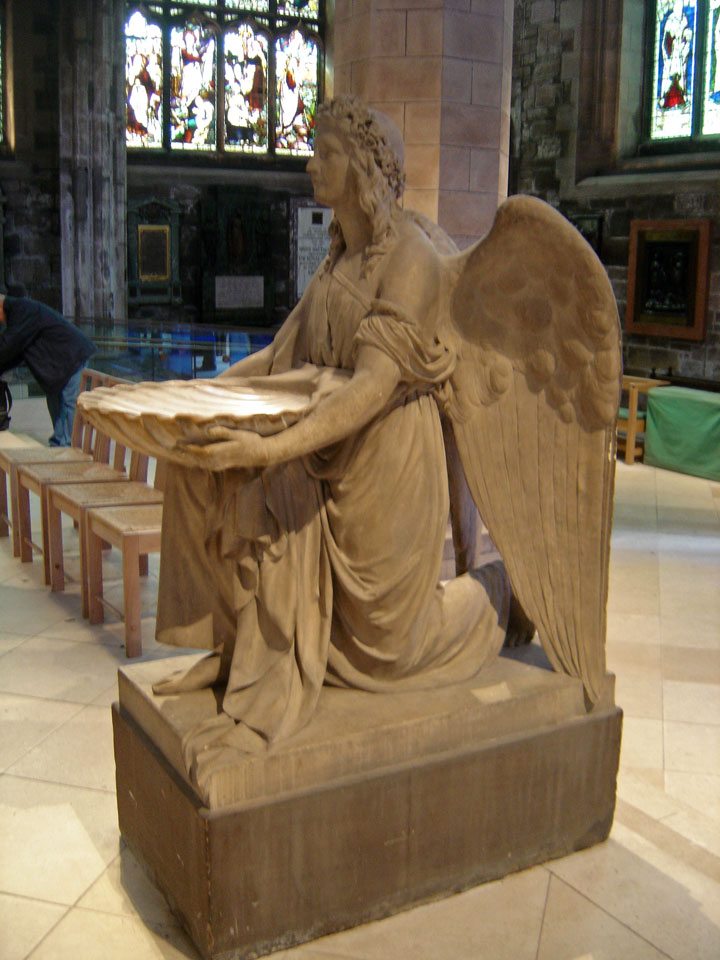
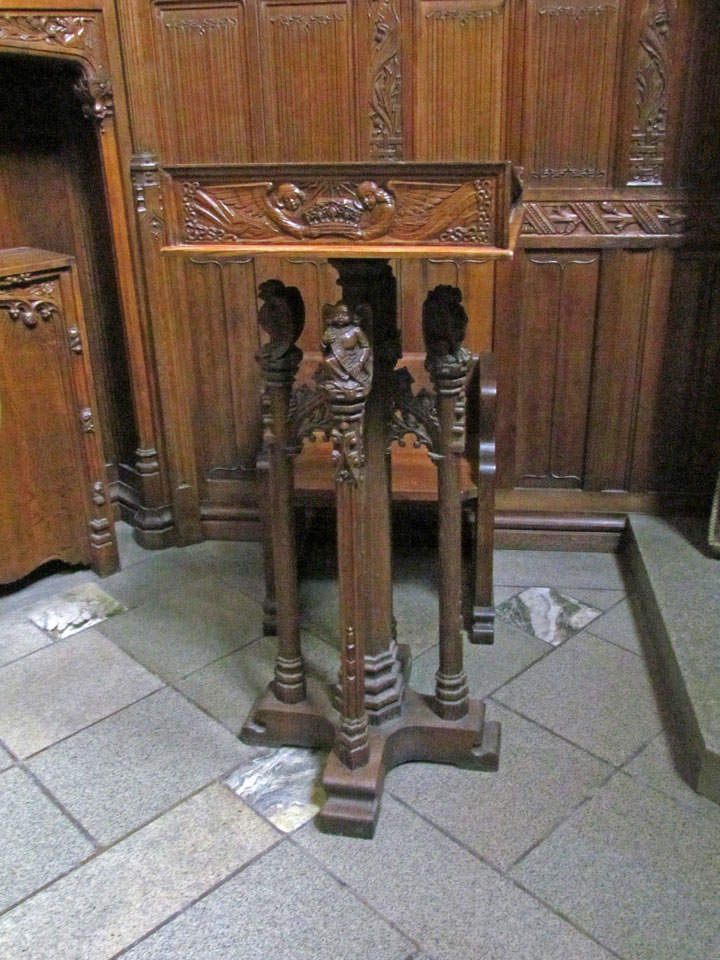
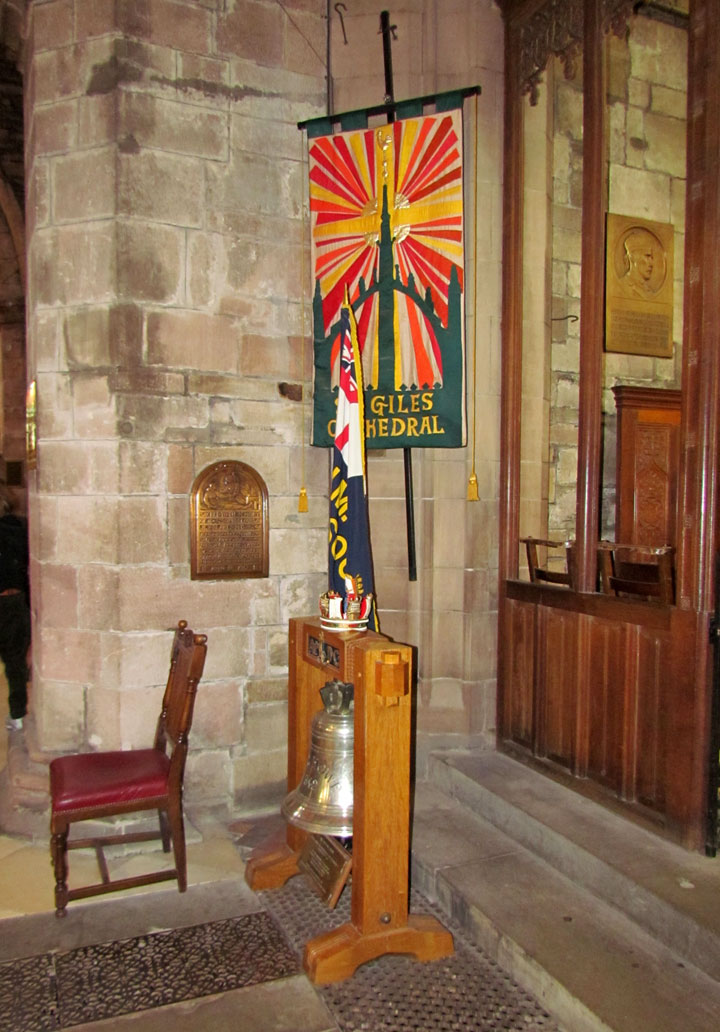
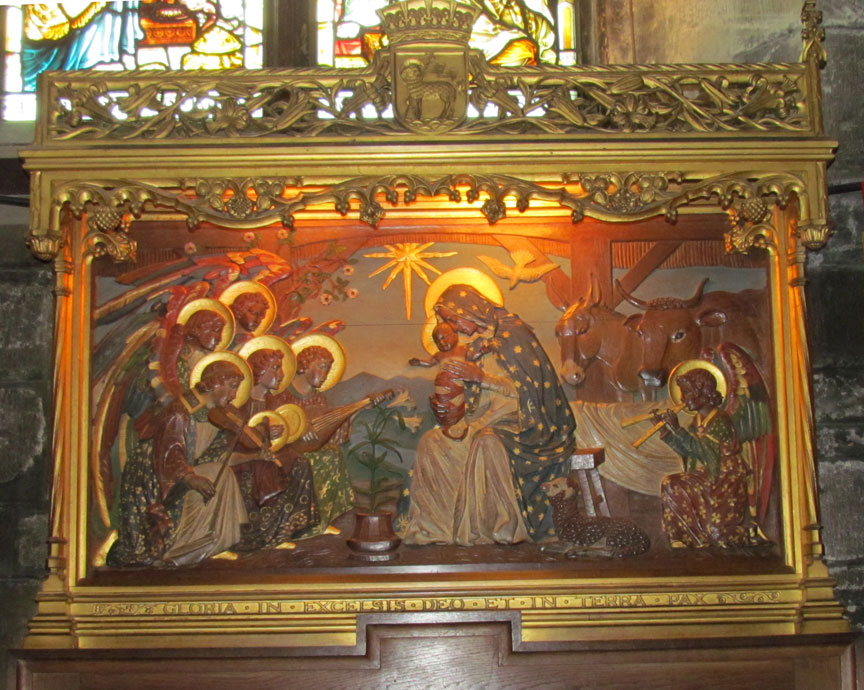
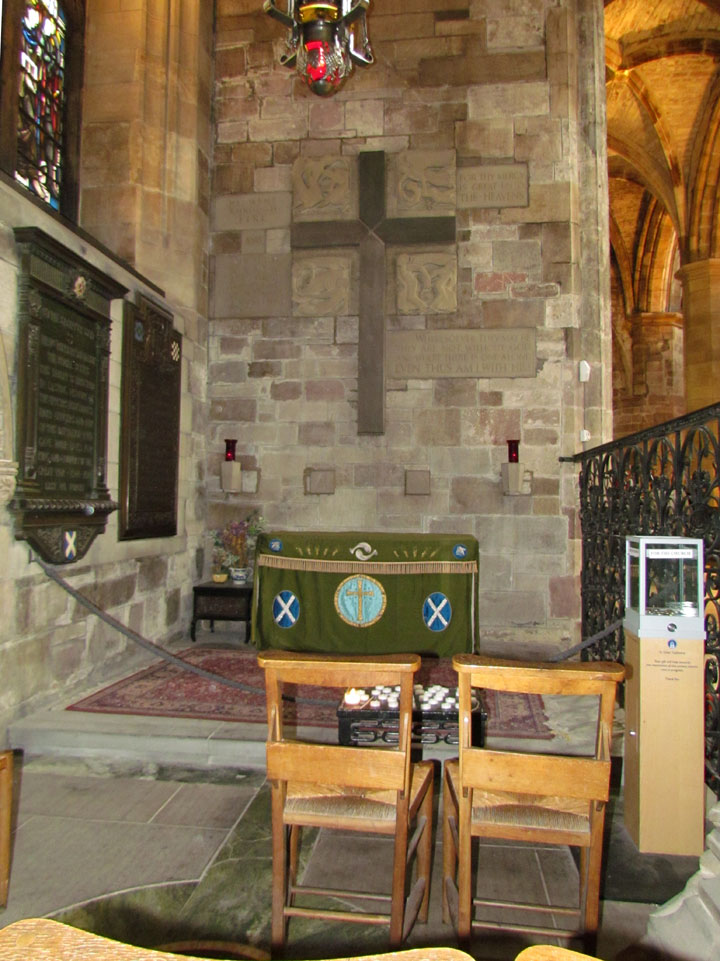

During the years 1872-83, Sir William Chambers, Lord Provost of Edinburgh,
planned and financed a further major restoration with the aim of creating a
national church building: "a Westminster Abbey for Scotland." Chambers hired
architects William Hay and George Henderson to do the restorative work. The
building was cleaned and old galleries and partition walls were removed,
creating a single interior space for the first time since the Reformation.
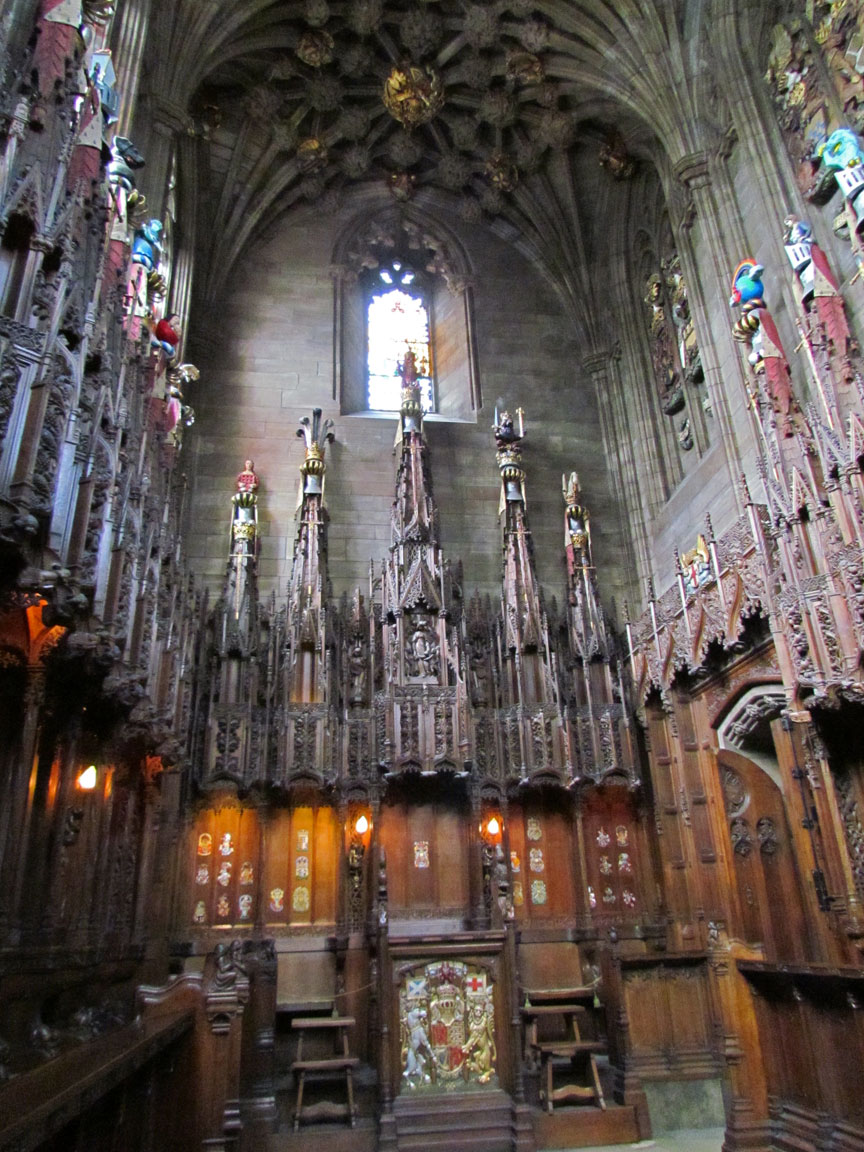
Thistle Chapel
More Photos of the Thistle Chapel
The Thistle Chapel is the chapel of The Most Ancient and Most Noble Order of the Thistle, Scotland's foremost Order of Chivalry. The chapel was built in 1911 to designs by Robert Lorimer, at the south-east corner of the church. It is small, but exquisite, with carved and painted fittings of extraordinary detail. The Order, which was founded by King James VII in 1687, consists of the British monarch and 16 knights. The knights are the personal appointment of the monarch, and are normally Scots who have made a significant contribution to national or international affairs. Knights have included Sir Alec Douglas-Home, Lord Mackay of Clashfern and Sir Fitzroy MacLean.
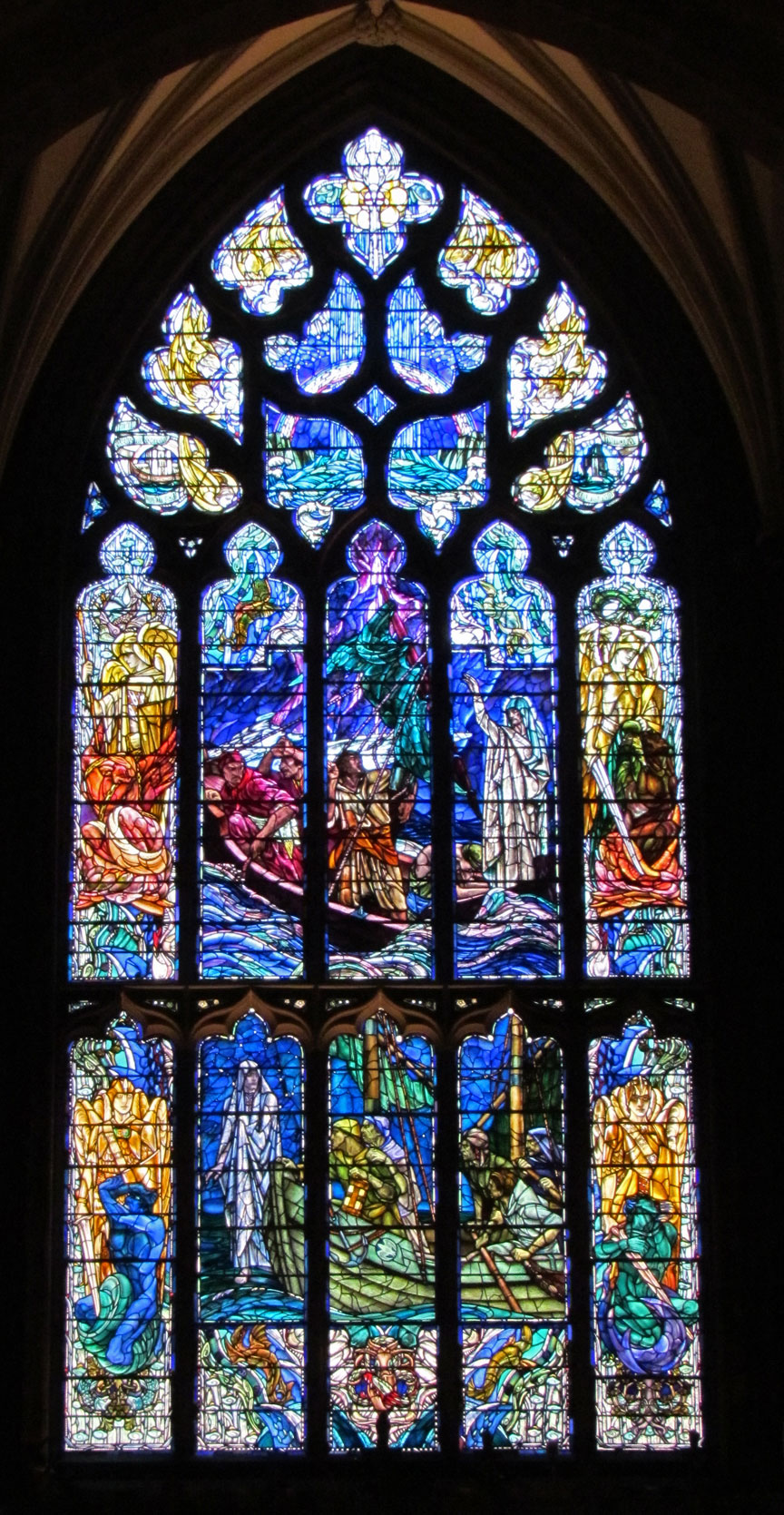
Stain Glass Window
More Photos of the Stain Glass Windows
In the later 19th century, stained glass began to be put into the windows which had been largely clear or plain since the Reformation. This was a radical move in a Presbyterian church where such decorations were regarded with great suspicion. They were finally allowed on the basis that they illustrated Bible stories and were as such an aid to teaching, and not flippant decoration, or worse still perceived idolatry. Only a small number of windows were completed as part of the 19th-century restoration, but this began a process that resulted in the vast majority of windows containing stained glass by the middle of the 20th century. The windows were planned to form a continuous narrative starting in the north-east corner and finishing on the north-west side. One of the last windows of this plan depicts Saint Andrew, the patron saint of Scotland, holding his cross with, on either side of him, Saint Columba and King David (erroneously labelled Saint David). The depiction of saints, rather than Bible stories alone, by the mid 20th century shows how much attitudes to decoration had changed in the intervening period. Saint Andrew wears a flowing peacock-blue cassock and his features are modelled after prominent Edinburgh physician James Jamieson. Unusually, this window was funded by a grateful patient who insisted that Saint Andrew bear the features of the doctor. Below Saint Andrew are depicted Saint Giles, with his hind (a traditional association), and Saint Cuthbert. The dedication beneath the Saint Andrew window states: "James Jamieson Fellow of the Royal College of Surgeons Edinburgh and Elder of the Kirk, born 1841, in Bowden, and died 1903".
Text from Wikipedia

musicians
